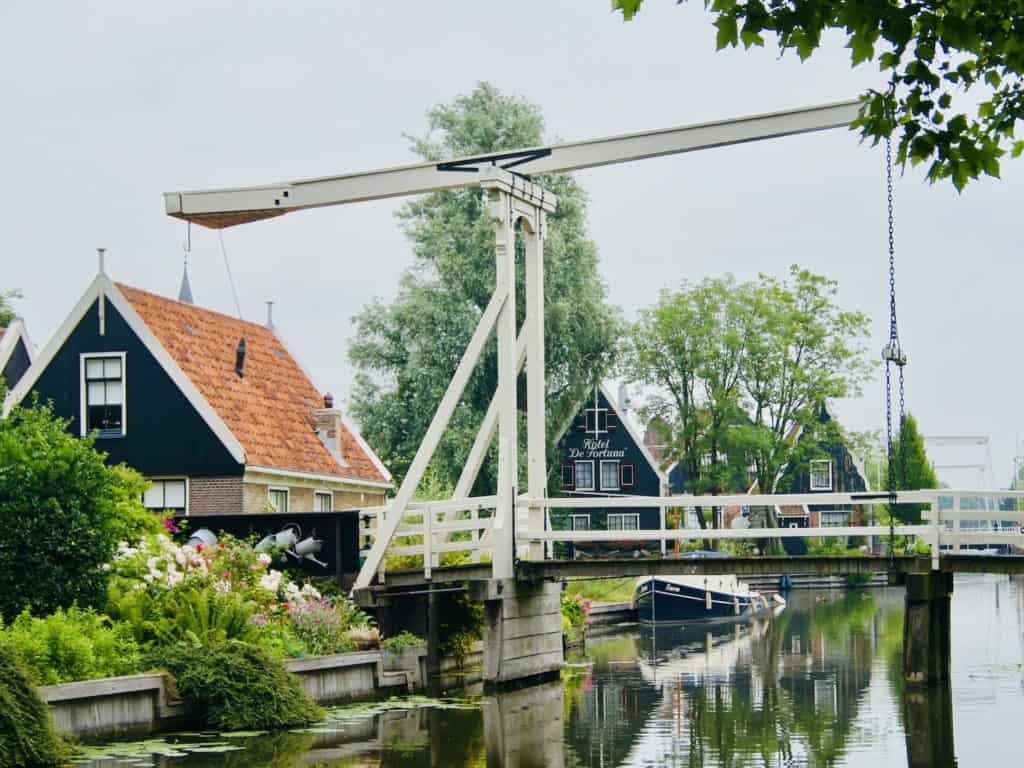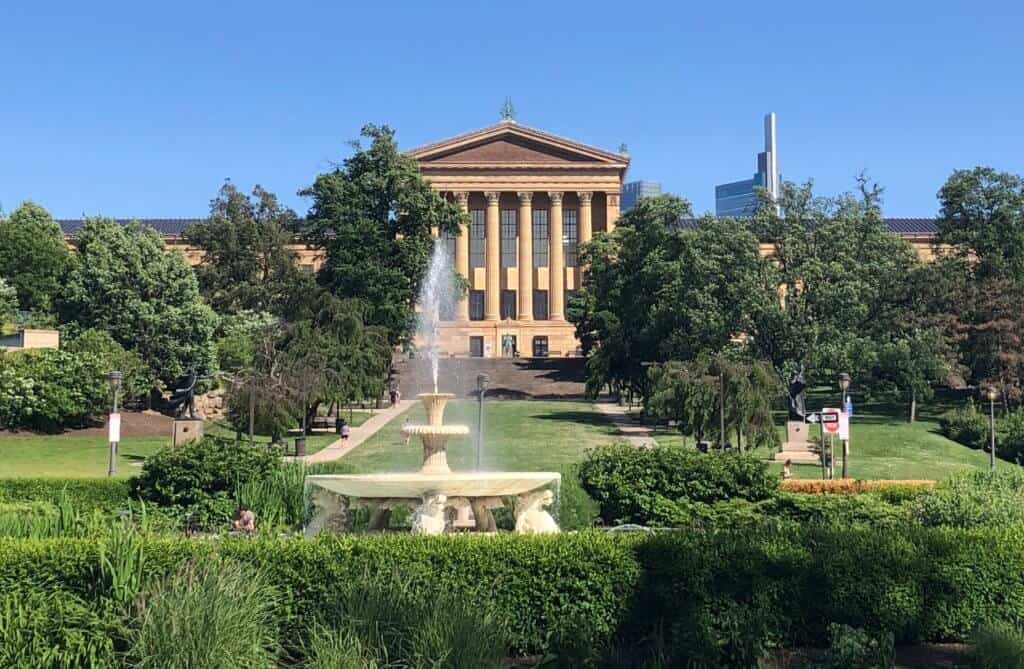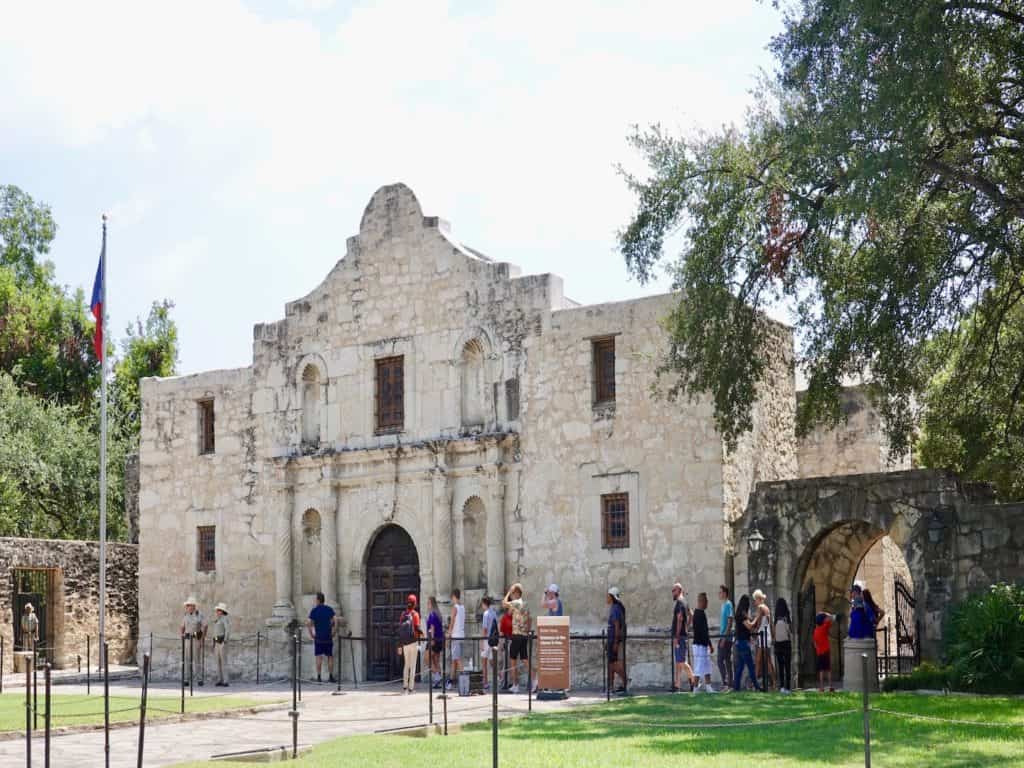The New York Adirondack mountains are acclaimed for their abundant natural beauty and tons of recreation opportunities. In addition, there are a number of places that figure prominently in American history. Listed here are 10 historical destinations in upstate New York where the past really comes alive for visitors. These sites date back to various periods around 3 major military conflicts on American soil: the French and Indian War (1754-1763), the American Revolutionary War (1775-1783), and the American Civil War (1861-1865).
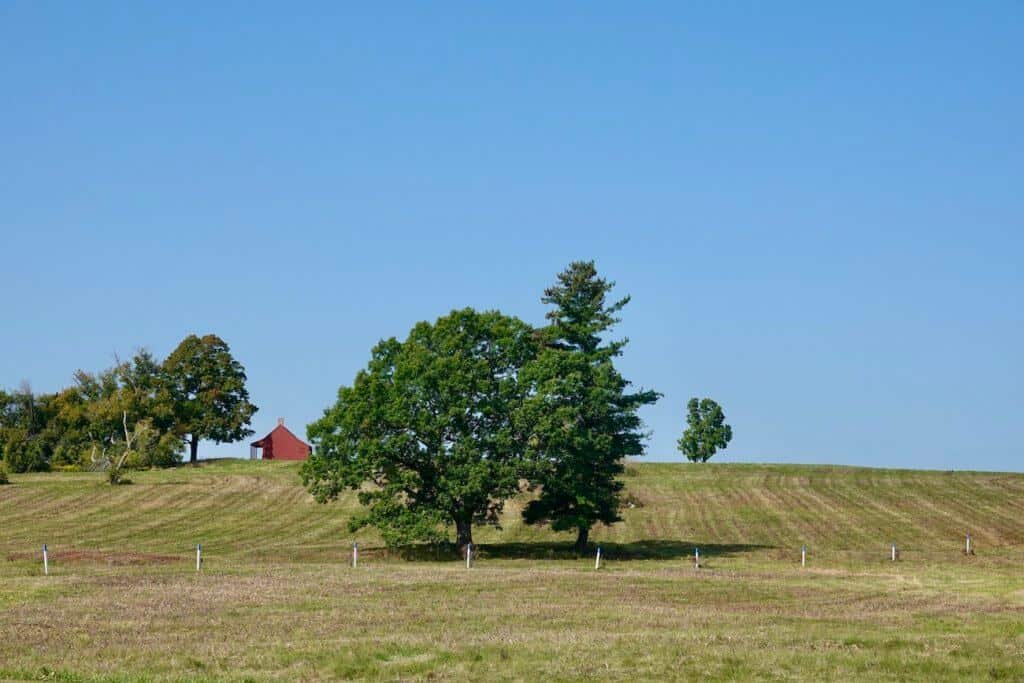
By the way, there are plenty of museums in the area, but I’ve chosen to focus on spots where early Americans lived, worked — and, in some cases, fought and died.
Locations of the historical sites are:
- Lake Placid: John Brown Farm State Historic Park
- Ticonderoga: Fort Ticonderoga
- Ticonderoga: Mount Defiance
- Lake George: Fort William Henry
- Wilton (outside Saratoga Springs): Grant Cottage
- Saratoga Springs area: Saratoga National Historical Park
- Saratoga Springs area: Surrender Site
- Saratoga Springs area: Schuyler House
- Saratoga Springs area: Saratoga Monument
- Saratoga Springs area: Victory Woods
#1 John Brown Farm State Historic Site
Located in Lake Placid, this is where abolitionist John Brown lived and is buried. In 1849, he moved here and sought to begin a farming community for free Blacks. He provided homesteads to them, but the climate didn’t prove conducive to productive farming, and most left before too long.
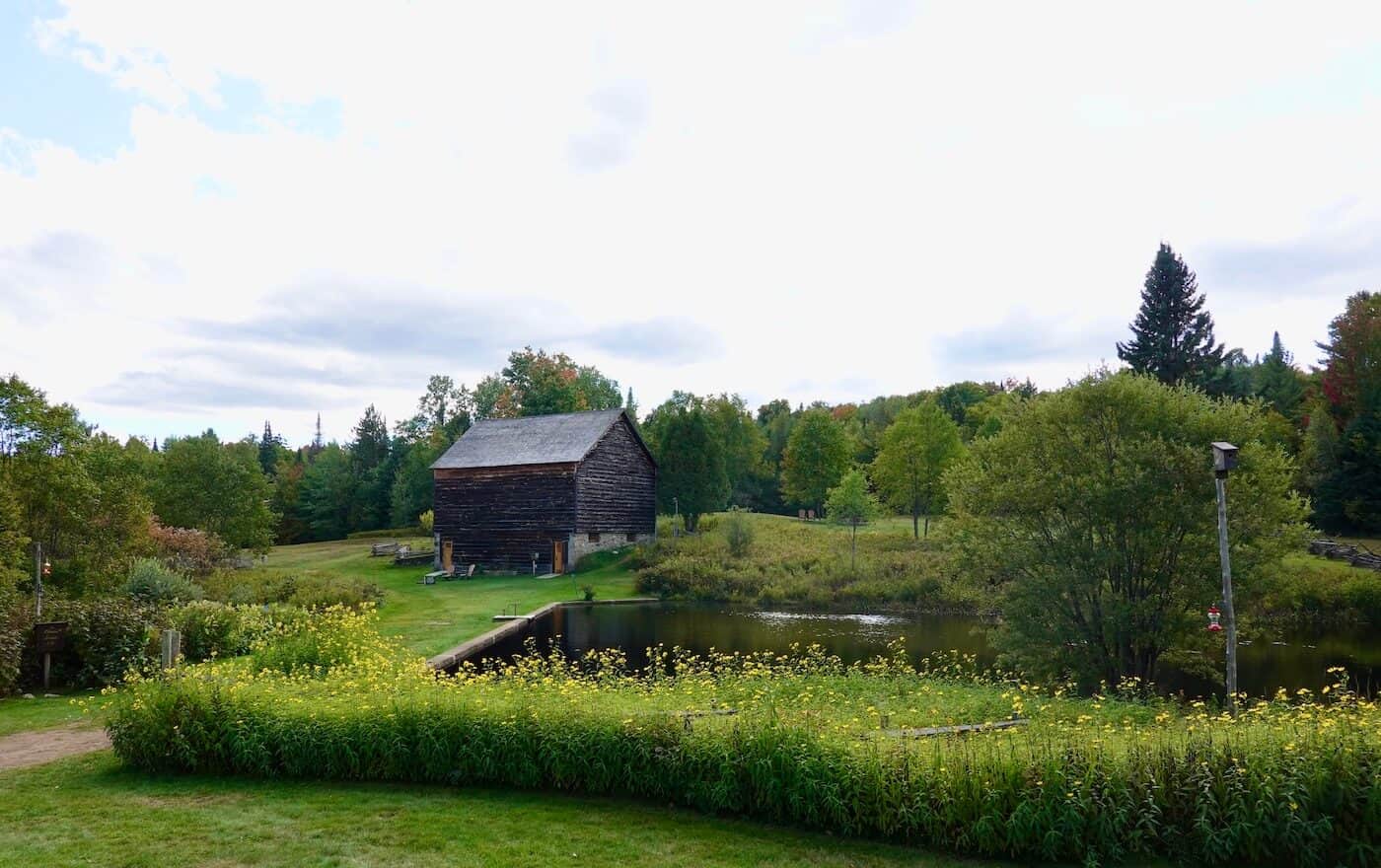
A year after his first wife died in childbirth, Brown remarried. Between the two marriages, he fathered 20 children, 9 of whom died young. He was frequently away, leaving his wife to maintain the property. While living here, he created his own headstone that would be used years later for his grave.
Pre-Civil War Conflict
As many remember from history books, John Brown led 21 armed men in a raid on the U.S. Arsenal at Harper’s Ferry, Virginia in October 1859. Robert E. Lee and his Virginia militia captured 6 of the men (including Brown); they were tried and hanged months later in Charlestown, Virginia. His wife accompanied his body as it was transported from Virginia to his New York property for burial. Later, the bodies of several men who were in his raiding party were reinterred here.
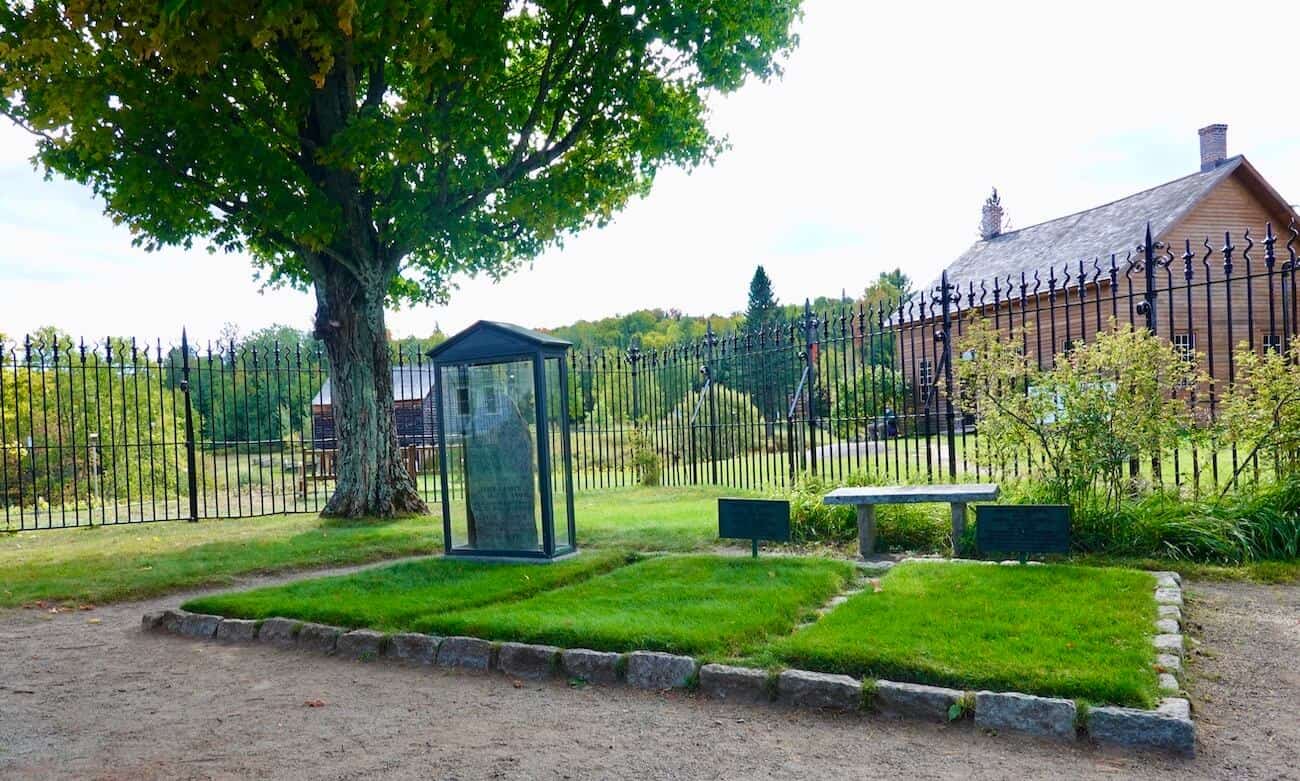
John Brown’s aggressive actions against those who enslaved Blacks pre-dates the American Civil War — a conflict that was an outgrowth of controversy about slavery — by just a couple of years.
New York State has maintained John Brown Farm State Historic Site since 1896. In time, the home was returned to its original condition and is furnished with period pieces. 115 John Brown Road, Lake Placid, NY
Suggestions for Your Visit
The property has a restored house, a barn (that has a video and exhibits), a small cemetery, and surrounding acreage. If time permits, consider walking the trails around this quiet locale. The grounds are accessible year-round; buildings are open most days (closed Tuesdays) from May through October. Check online for current hours of operation.
#2 Fort Ticonderoga
Set at a strategic spot along the shore of Lake Champlain (just north of Lake George which flows into Lake Champlain), this star-shaped fort was built in 1755 by the French who named it Fort Carillon.
French-Indian War Era
Fort Carillon was the site of a battle between the French, who claimed colonies to the north and west (including Canada), and the British (who claimed colonies along the eastern seaboard of what is now the United States).
Fort Carillon was a key French defense against the British until General Jeffrey Amherst captured it in 1758 during the French and Indian War. He changed the fort’s name from Carillon to Ticonderoga in 1759. Ticonderoga is an Iroquois word that means “at the junction of two waterways” — Lake Champlain and Lake George.
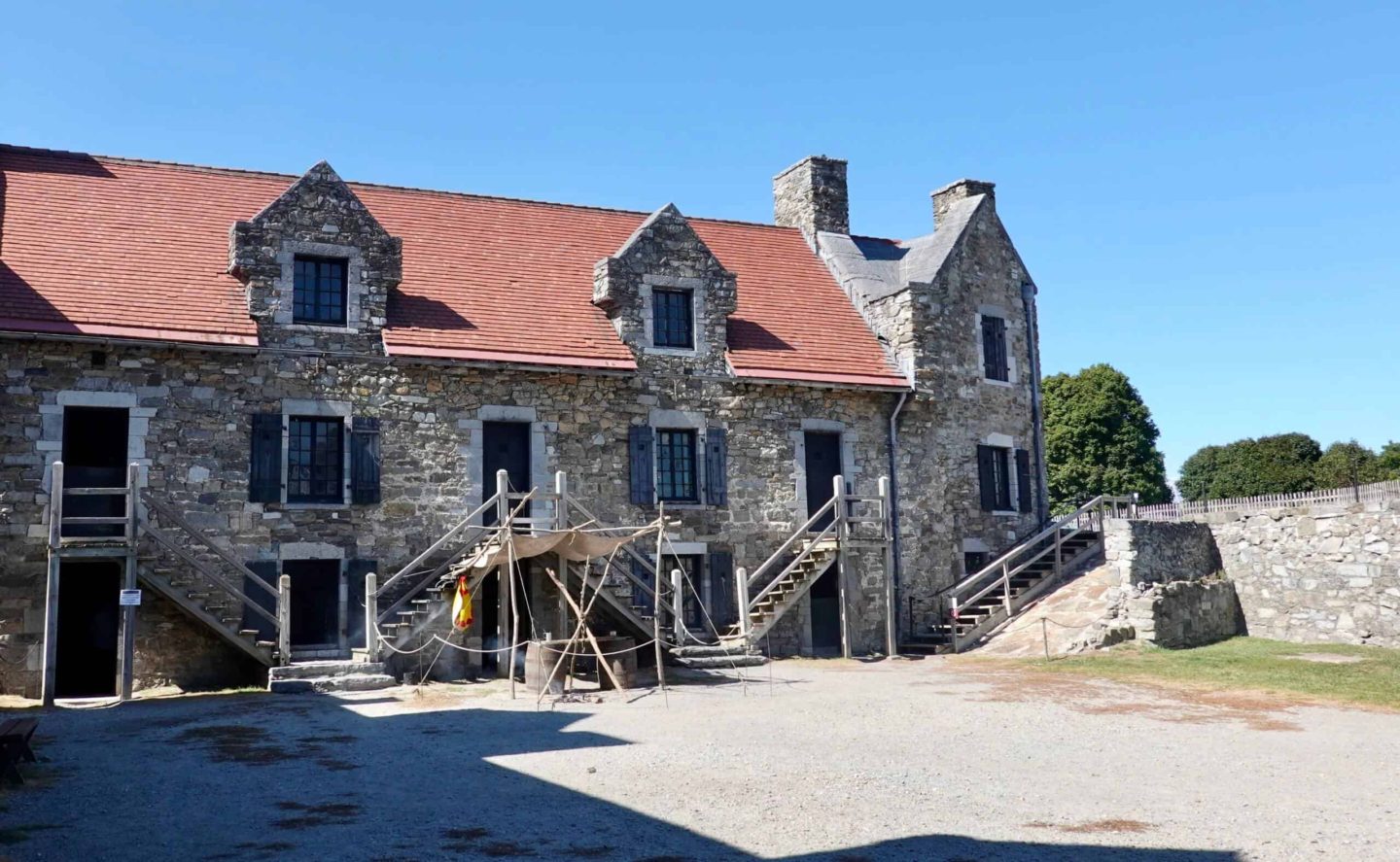
Revolutionary War Era
Years later, during the American Revolutionary War, American colonist commanders Ethan Allen and Benedict Arnold led their men in a surprise attack on the fort, seizing it from the British. Afterward, in the middle of a harsh and snowy winter, the Patriots transported cannons from the fort to Boston; doing so enabled the Americans to drive the British out of Boston in March 1776. The Americans successfully defended Fort Ticonderoga until 1777 when the British came to dominate higher ground at Mount Defiance, leading the Patriots to withdraw. Later, the fort was abandoned and fell into ruins.
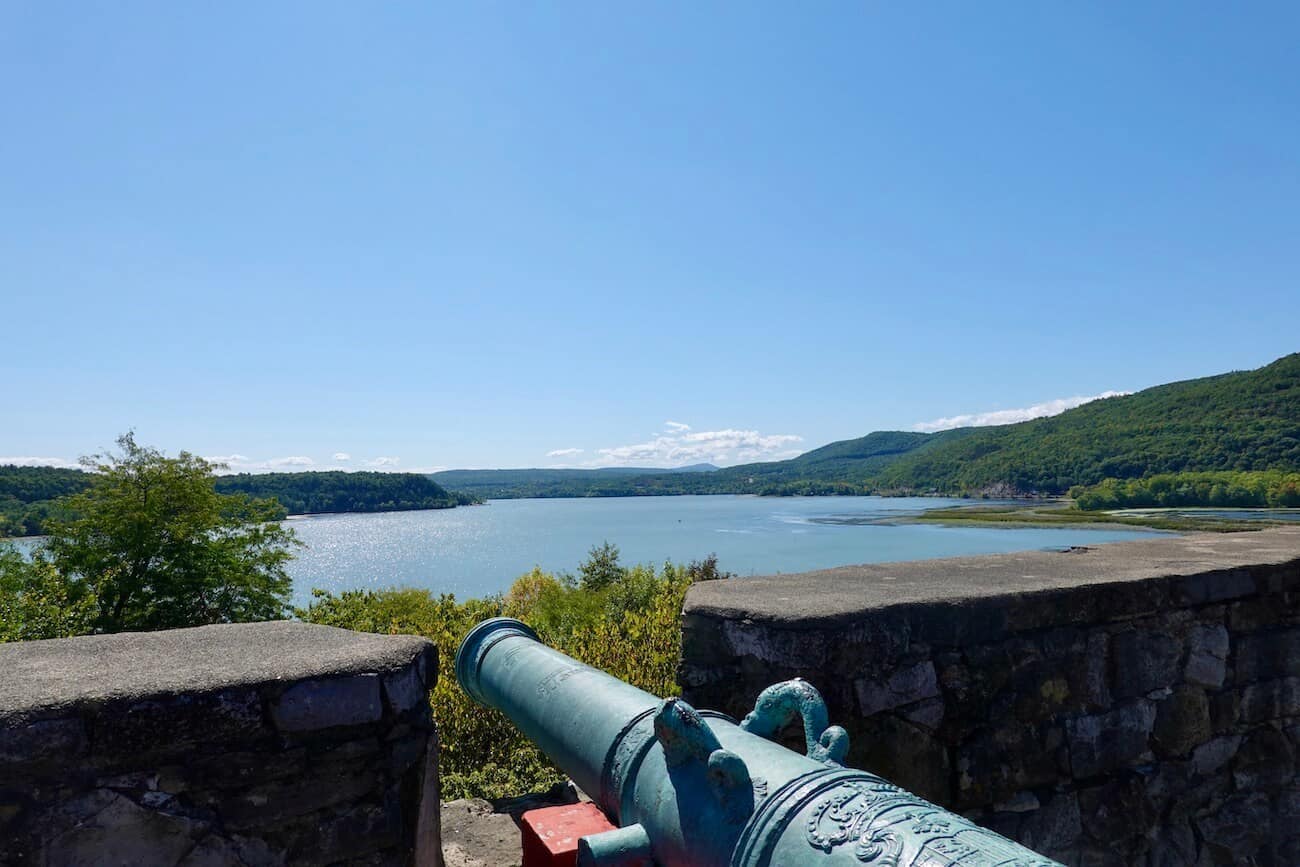
Reclaiming History
In the early 19th century, the Pell family procured the land; they set about to restore the site to its original stature. Over the years, others have owned the property, made further improvements to the site, and added exhibits and reenactments. All this leads today to a very popular destination for history buffs.
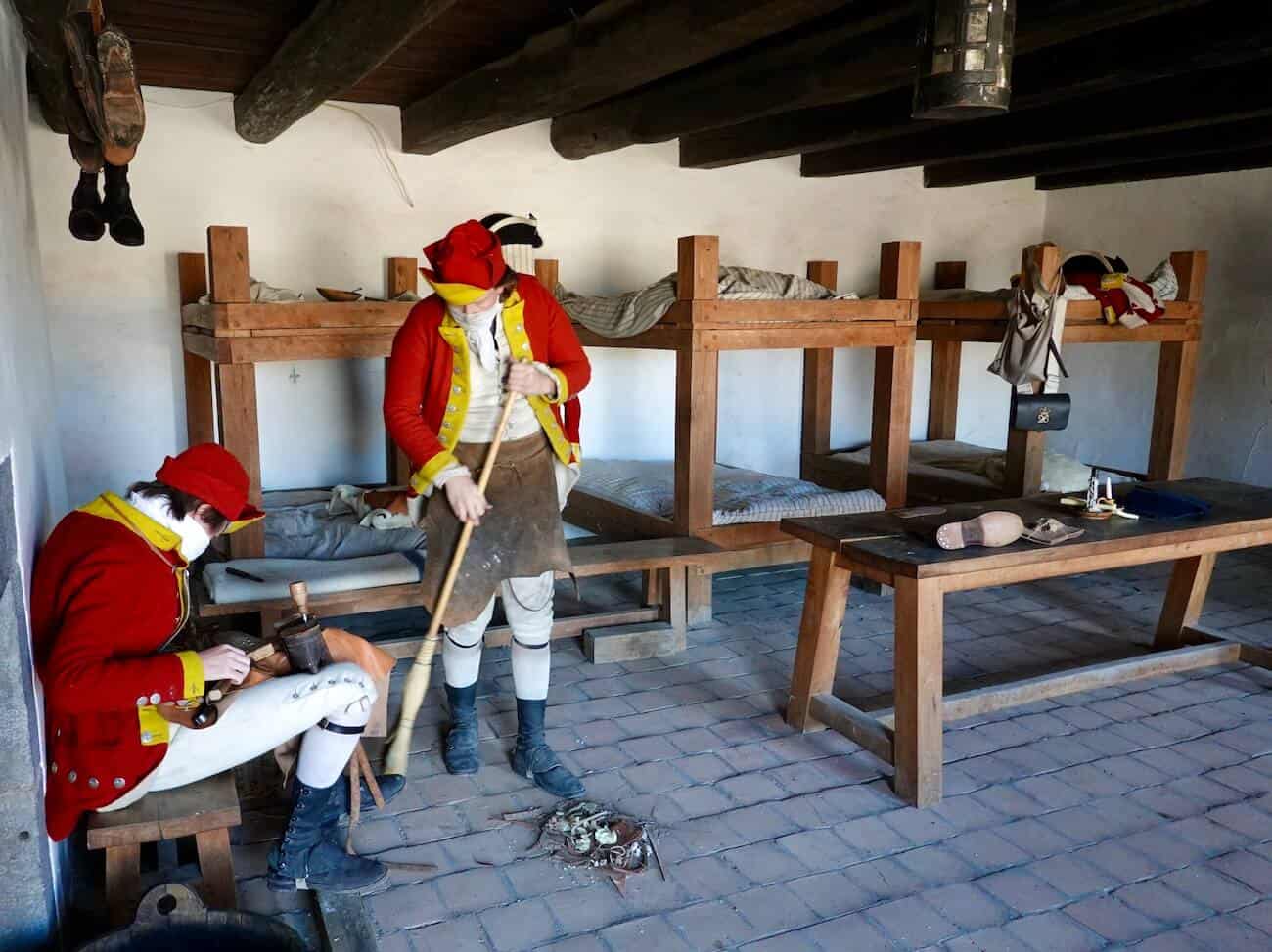
Today’s Site
Today, as you enter Fort Ticonderoga, you drive by the King’s Gardens that beckon visitors to the lush flower and vegetable plots and the peaceful setting along Lake Champlain. There’s a 75-minute scenic boat cruise aboard the Carillon on Lake Champlain — a wonderful option to learn more about the area. Further up the hill sits the fort itself. The fort has guided tours and reenactments in the barracks. It also has plenty of places to appreciate the gorgeous views north and south along Lake Champlain and Vermont on the opposite shore. 102 Fort Ti Road, off NY 22, Ticonderoga, NY
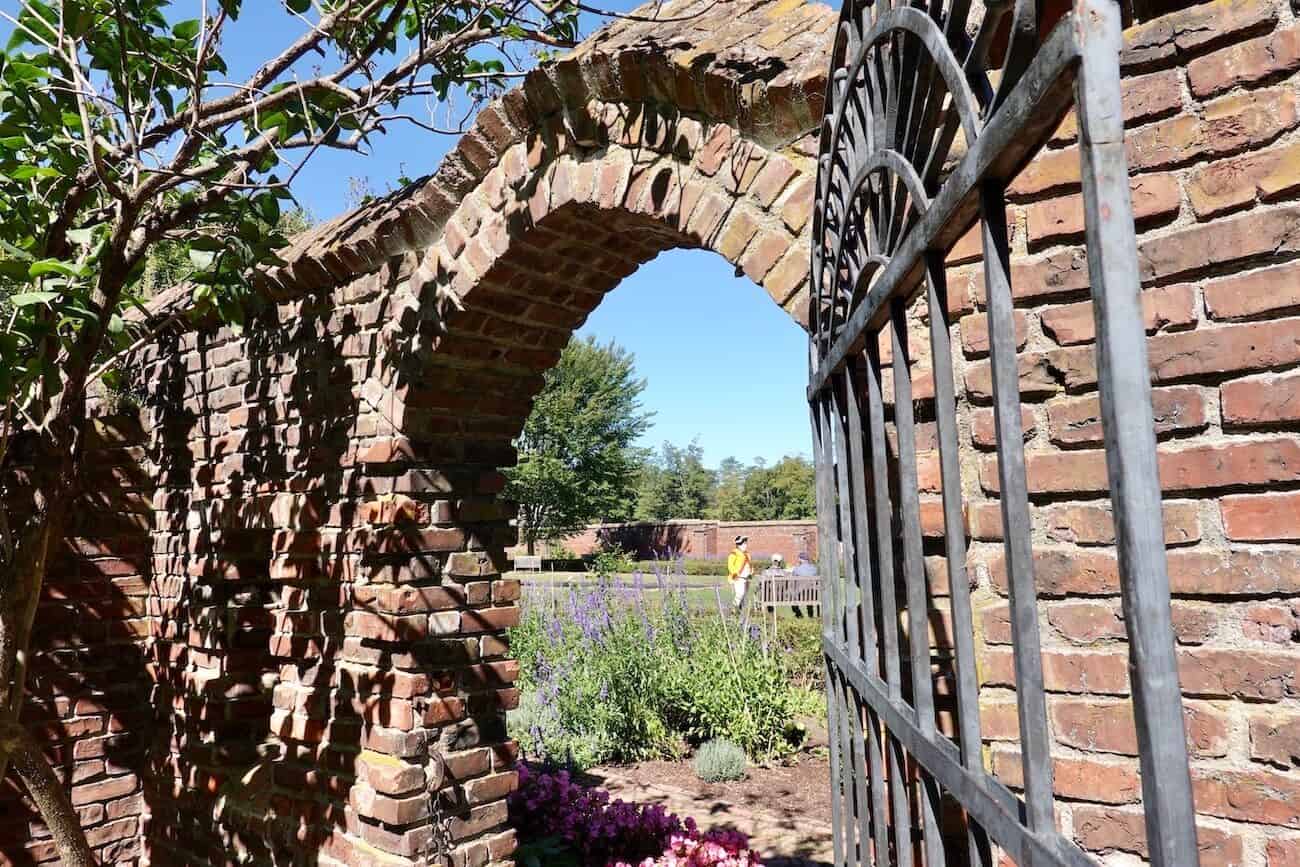
Suggestions for Your Visit
The grounds are usually open from June through mid-October but check online for days and hours of operation before you plan to visit.
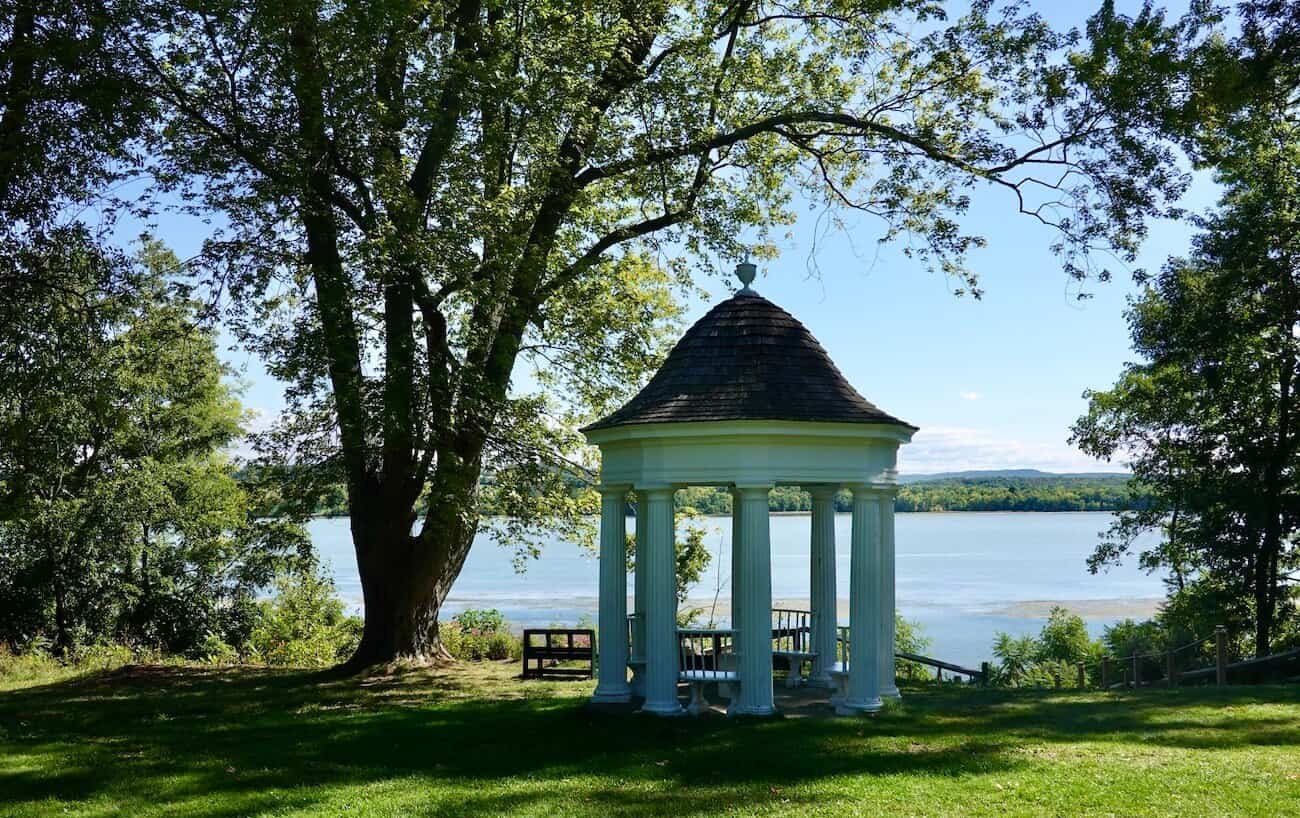
One could easily spend hours on the grounds of Fort Ticonderoga. Besides the fort itself, there are beautiful gardens to wander through, the waterfront that overlooks Lake Champlain, an interesting museum with artifacts from both wars fought here, and trails through the battlefield where soldiers’ huts once stood. We didn’t have the time to stay longer than a couple of hours but wish we had known about the expansive grounds ahead of time. There are plenty of picnic tables on the grounds; bring a picnic or, if you prefer to purchase a meal, there is a cafe on-site.
When visiting Fort Ticonderoga, definitely plan on adding on a short visit to Mount Defiance (included with admission to the fort). It’s a short drive away and it offers incredible views of Lake Champlain — north and south. And, of course, you’ll have a bird’s eye view of Fort Ticonderoga.
#3 Mount Defiance
A few miles from Fort Ticonderoga, Mount Defiance is a strategic military lookout — that proved quite advantageous to the British. The Redcoats stationed cannons here in a show of force to the American colonial military in the fort. A stop here continues the narrative of Fort Ticonderoga as the British intimidation worked. The Americans abandoned Fort Ticonderoga without a conflict.
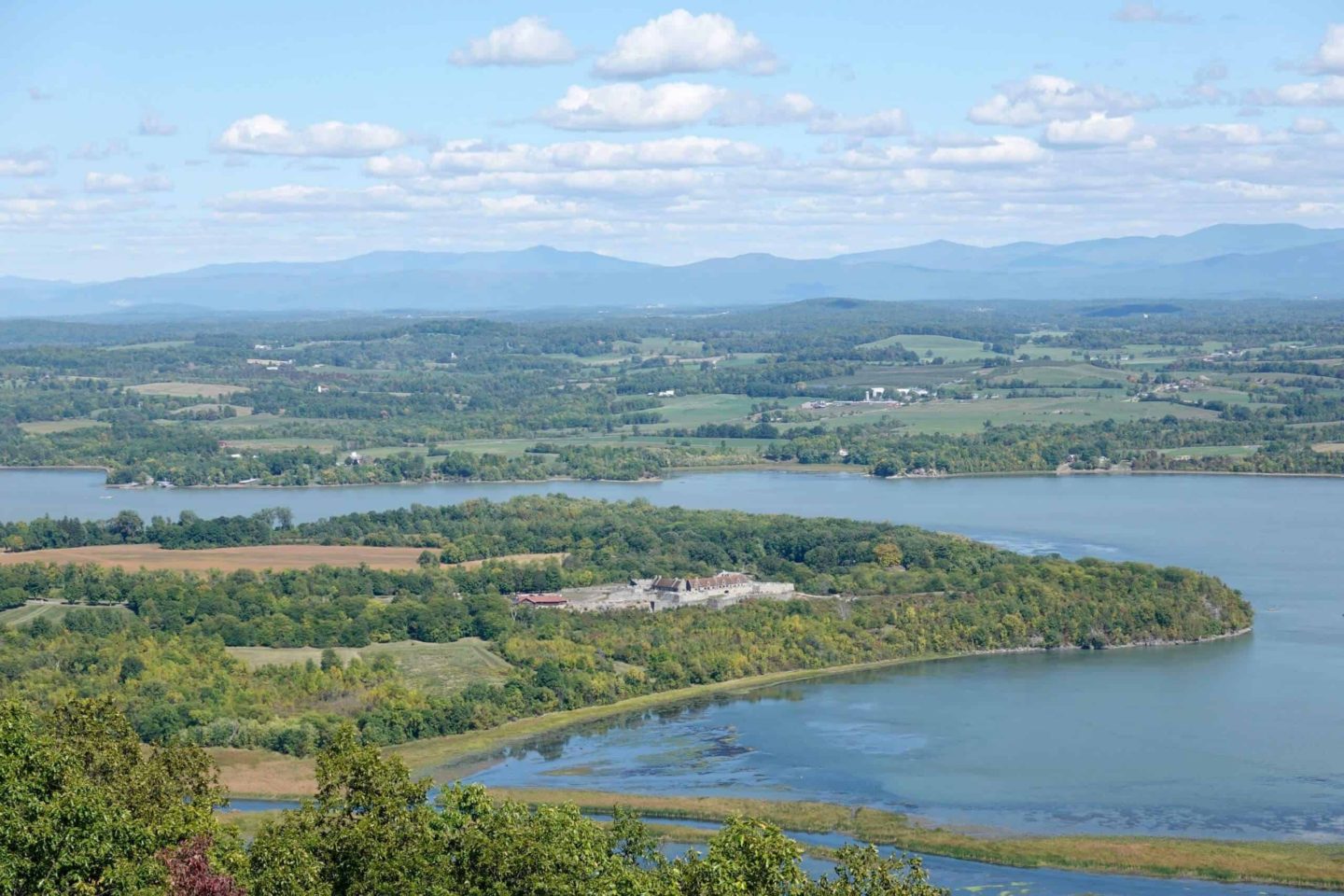
Given its elevation (758 feet above Lake Champlain), Mount Defiance provides even better panoramic views than Fort Ticonderoga. An experience definitely worth a short visit. When you pay for admission to Fort Ticonderoga, you will receive a token that you will use to gain access to Mount Defiance. 72 Defiance St, Ticonderoga, NY
Suggestions for Your Visit
Bring along binoculars so you can take in the gorgeous views from this elevation.
#4 Fort William Henry
Located on the southern tip of Lake George (named for British King George III), Fort William Henry was built by the British in 1756. Over 1,500 French soldiers (and several thousand Native Americans who sided with them) attacked the fort in 1757 during the French and Indian War. What transpired here forms the basis for The Last of the Mohicans by James Fenimore Cooper.
The French had planned to take the fort in one day, and then move south to a key British stronghold. The actual battle took 7 days and exhausted the French of men and supplies, and as a result, they retreated to Canada. Although they were the victors, they were drained of what they needed to continue the fight — thus, this became a turning point in the French and Indian War.
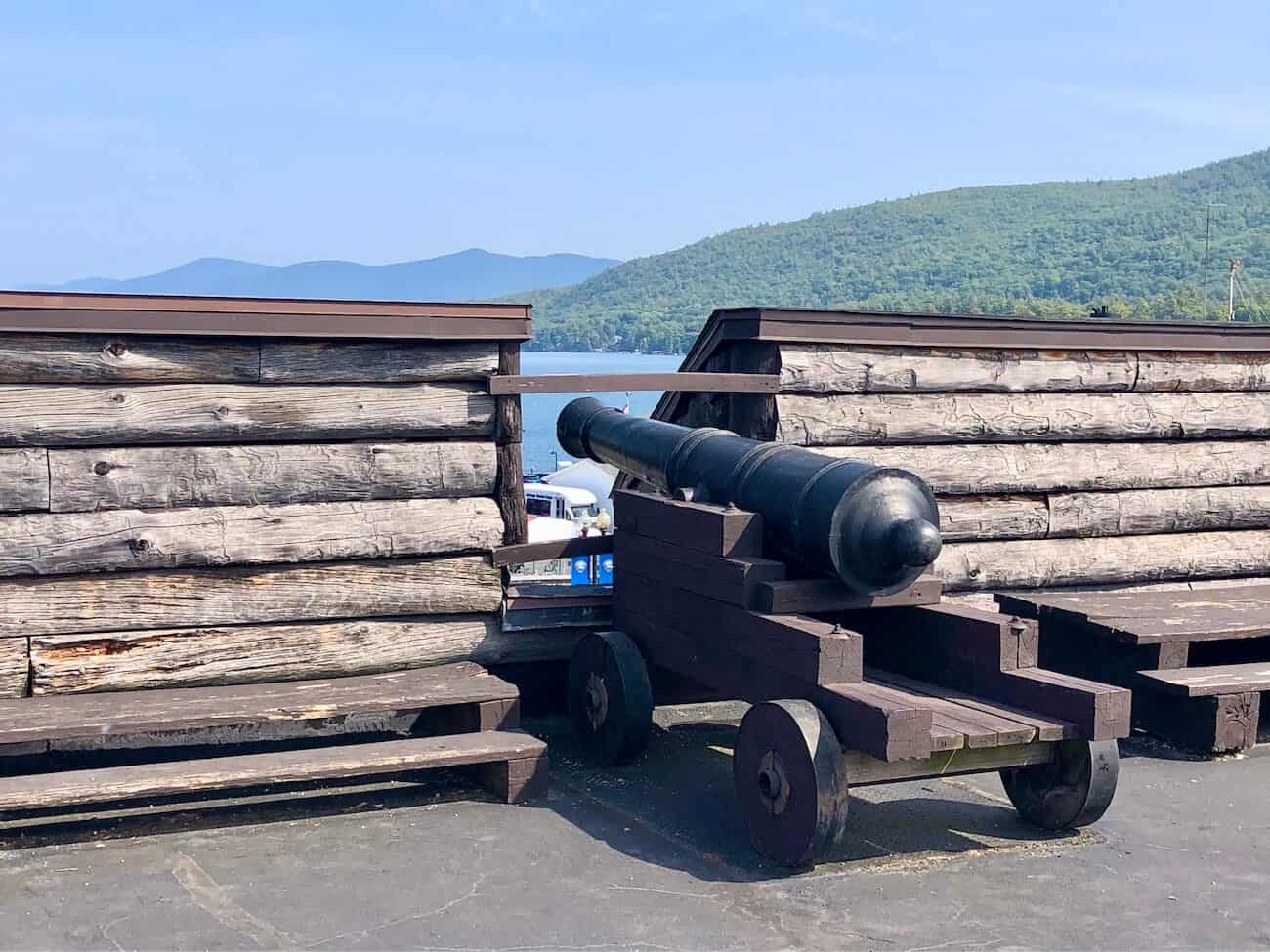
The original fort was destroyed by the French. As is the case with Fort Ticonderoga, what you see today is not the exact structure that stood here centuries ago. Local businesspeople invested in the reconstruction of Fort William Henry. Today there’s a small museum that visitors can peruse before taking a guided tour of the fort. This tour includes an entertaining narrative and firings of a musket and cannon.
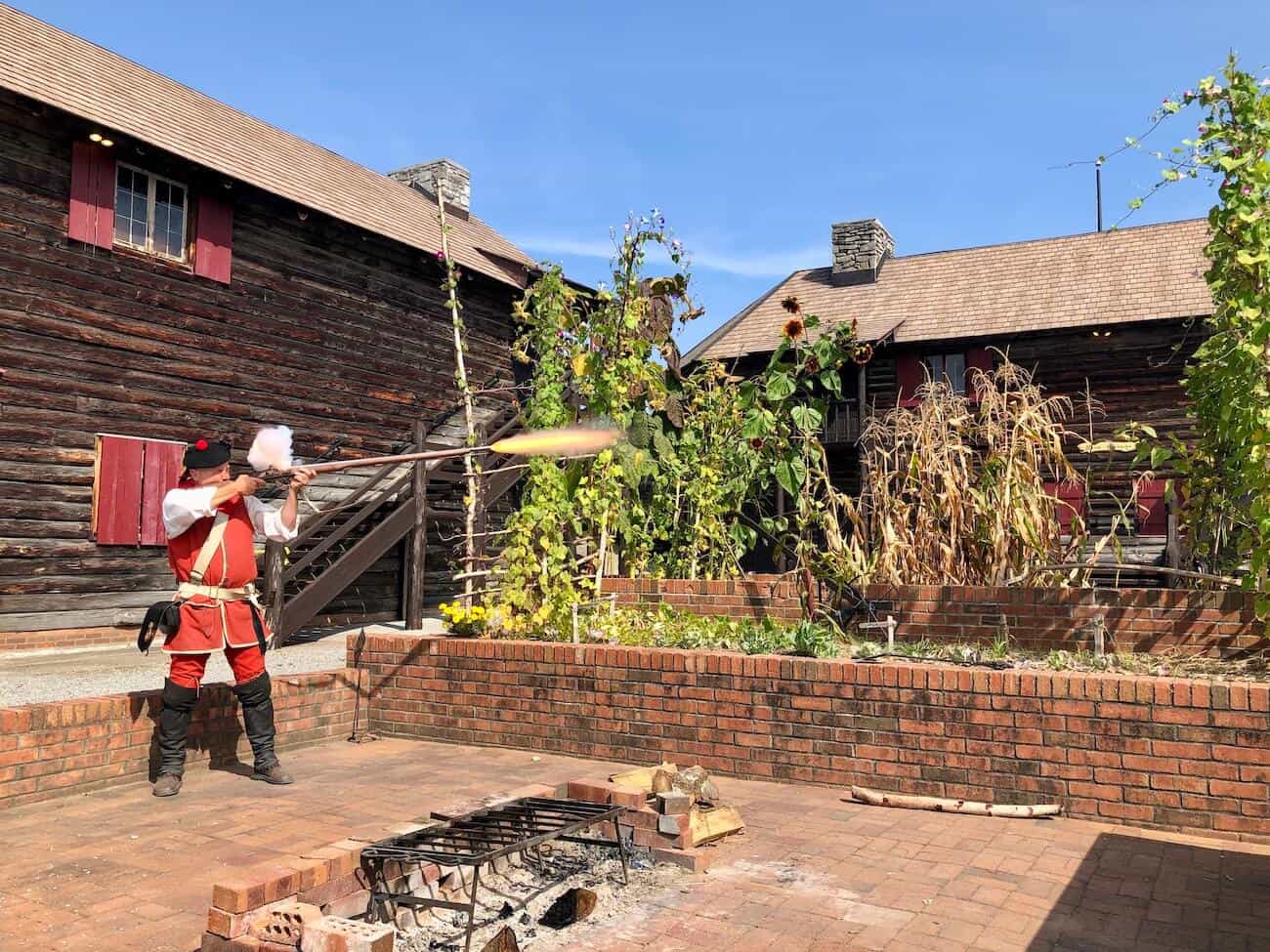
Suggestions for Your Visit
Check online before your visit for current hours of operation and ticketing procedures.
#5 Grant Cottage
A unique presidential historical home sits just nine miles north of Saratoga Springs in Wilton: Grant Cottage. This house (a friend’s home) is where President Ulysses S. Grant retreated from the stifling heat of a New York City summer in 1885 (8 years after his presidency ended) to finish writing his memoirs. At this point, he was in the advanced stages of throat cancer that would end up claiming his life. It was here that he spent his last 6 weeks of life before dying in the house on July 23, 1885.
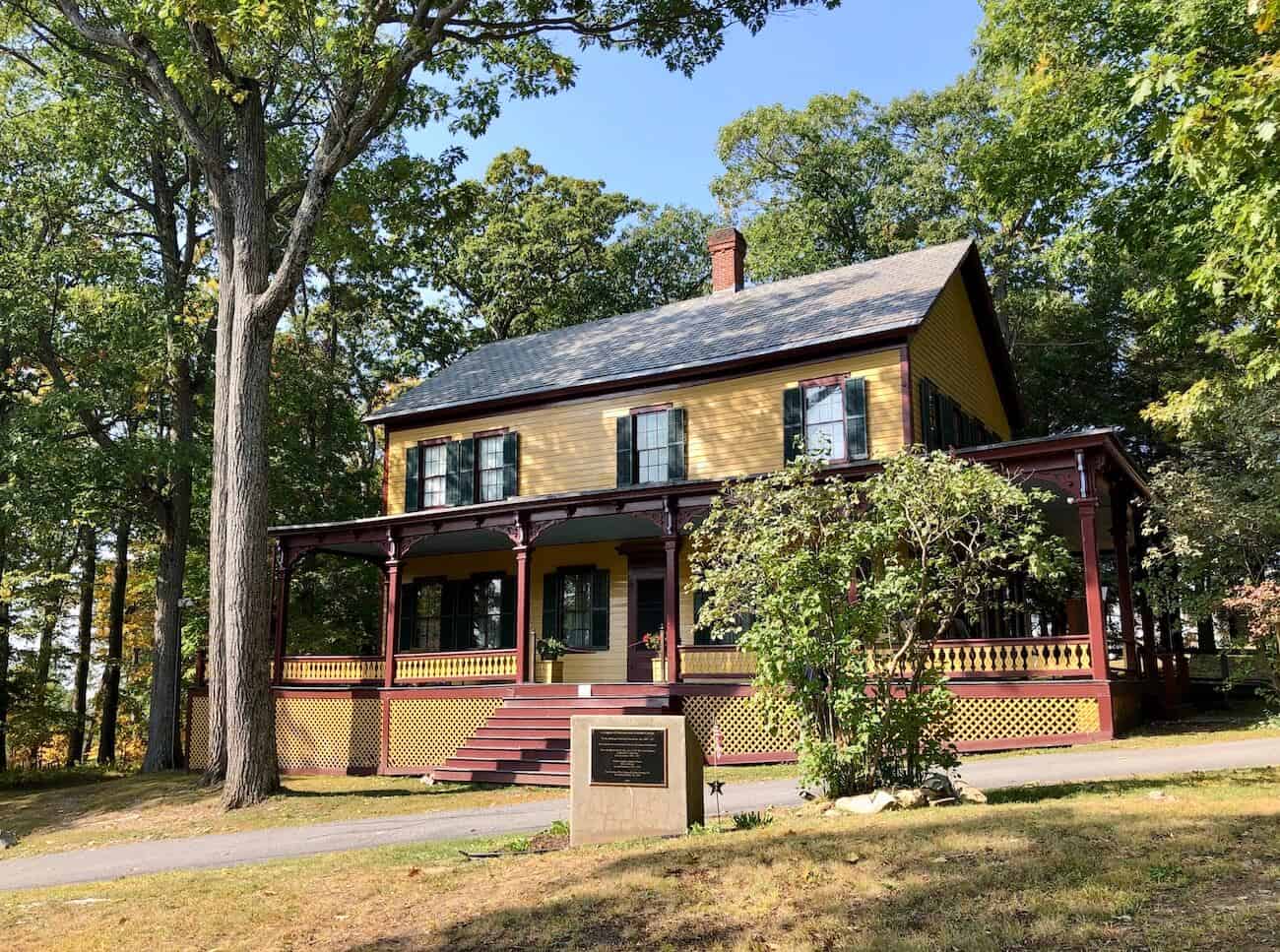
Finishing His Memoir
Finishing this monumental task was critical to the future financial stability of Grant’s wife, Julia, and the rest of the Grant family. Turns out one of his sons made a substantial investment that went bad, and the family faced financial ruin. Grant hoped his memoir would sell well enough to guarantee that the family could live in comfort after he died. That’s exactly what happened. The book was a financial success — and is still in print today.
To add to the interesting history here, Mark Twain paid a visit to Grant at the cottage, provided advice on his writing, and offered to publish the book. Grant accepted Twain’s offer, which turned out to be key to the book’s success — and, as a result, ensured financial stability for his family.
Inside the Cottage
Amazingly, the interior of the cottage is just about exactly as it was when Grant died — down to the original carpet. You’ll see where we worked, slept, and died.
Original artifacts in his study include the two upholstered chairs (facing one another) that he used to sleep at night while sitting up (since his medical condition prevented him from lying down for any length of time); the food grinder used to liquefy food for him; the pad of paper and pencil he used to write notes to others (since it was too painful for him to talk); copies of notes he wrote; and the clock on the mantel that his son, Fred, stopped at the time of his death: 8:08. Also inside the home is the bed Grant died in, the chair that he used when sitting on the porch in the cool mountain air, and the flower arrangements (that have been preserved) used at his memorial service at the home.
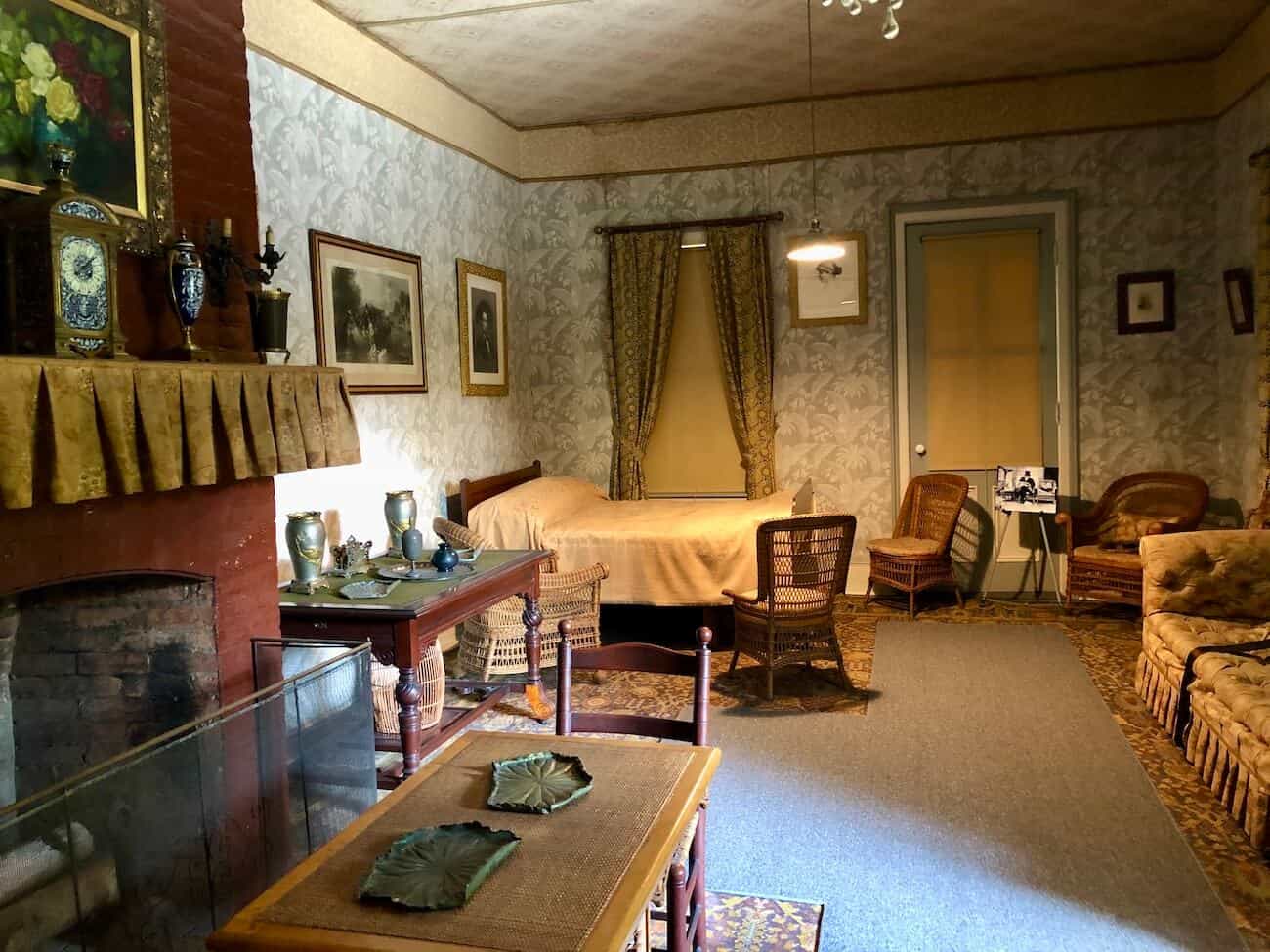
A Scenic Overlook
Outside is a short trail that leads visitors to an overlook with amazing views over the Hudson River Valley. It was a spot where Grant enjoyed taking a break from his writing. There’s an engraved marker indicating where he was when he last viewed the landscape, days before he died in the house.
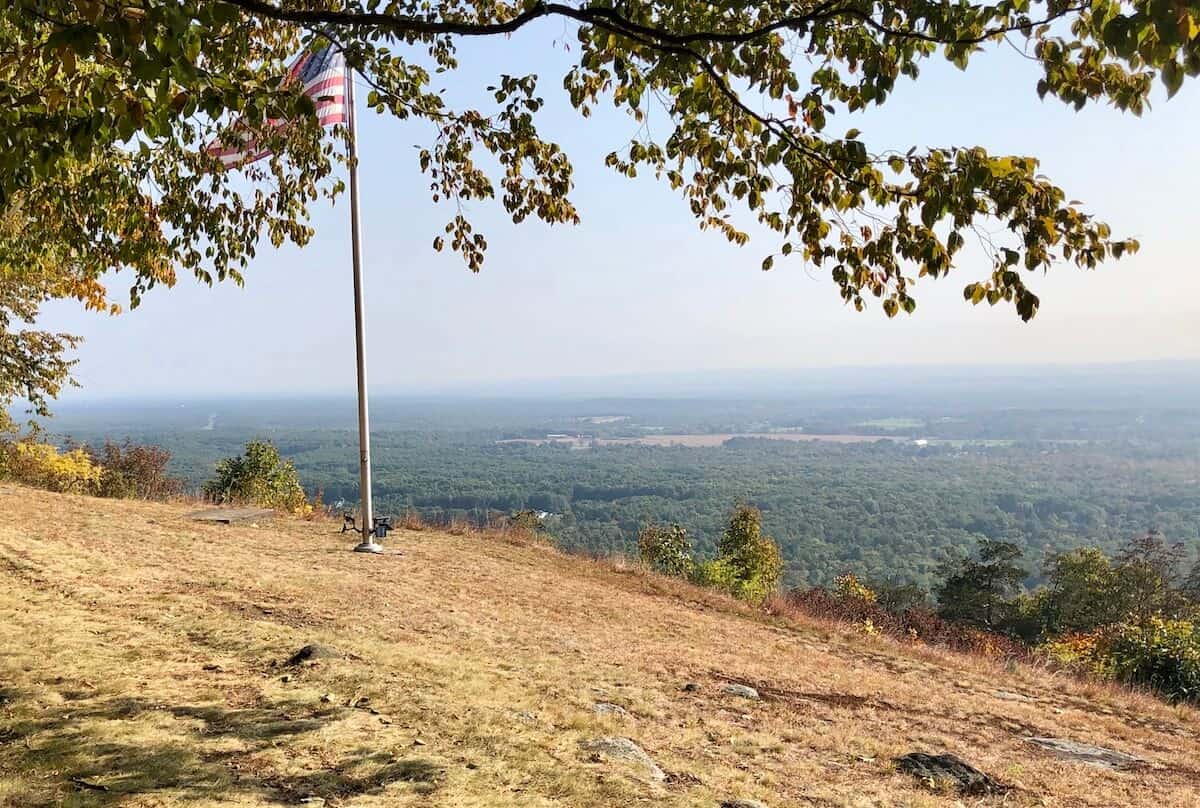
The property has other history, too. It was the site of a hotel resort (that no longer stands here), a tuberculosis center dating from the early 20th century, and a decommissioned prison. Visitors will see (but cannot visit) buildings from these previous uses while on the property. On Mt. McGregor, off Ballard Road, Wilton, NY
Suggestions for Your Visit
Check online before your visit for current hours of operation and ticketing procedures.
Once on the property, you’ll stop in the visitor center to watch a short film that provides context on the grounds and Grant’s stay here. Then you’ll make the short drive to the cottage itself where you’ll have a guided tour. Our tour was excellent, and the guide provided interesting details into Grant’s life and final days at this spot.
Plan on about 90-120 minutes for your visit. You’ll begin in the visitor center to see the short movie, proceed up to the cottage for a guided tour, and then spend some time at the overlook.
#6 Saratoga National Historical Park
Pivotal history was made at what is now the Saratoga National Historical Park. In 1777 the American army defeated a British force (that also included American Loyalists and German troops) which helped the fledgling Americans gain recognition and support from other countries. This support (particularly from the French) proved critical to the ultimate outcome of the American Revolution.
The Two Battles of Saratoga
There were two critical battles fought here in 1777. The first was on September 19 on the Freeman Farm. Here the two sides fought for several hours. The result? The Americans had to withdraw, but the British line suffered, too. British General John Burgoyne attacked the Americans a few weeks later on October 7 but was outwitted by the Americans.
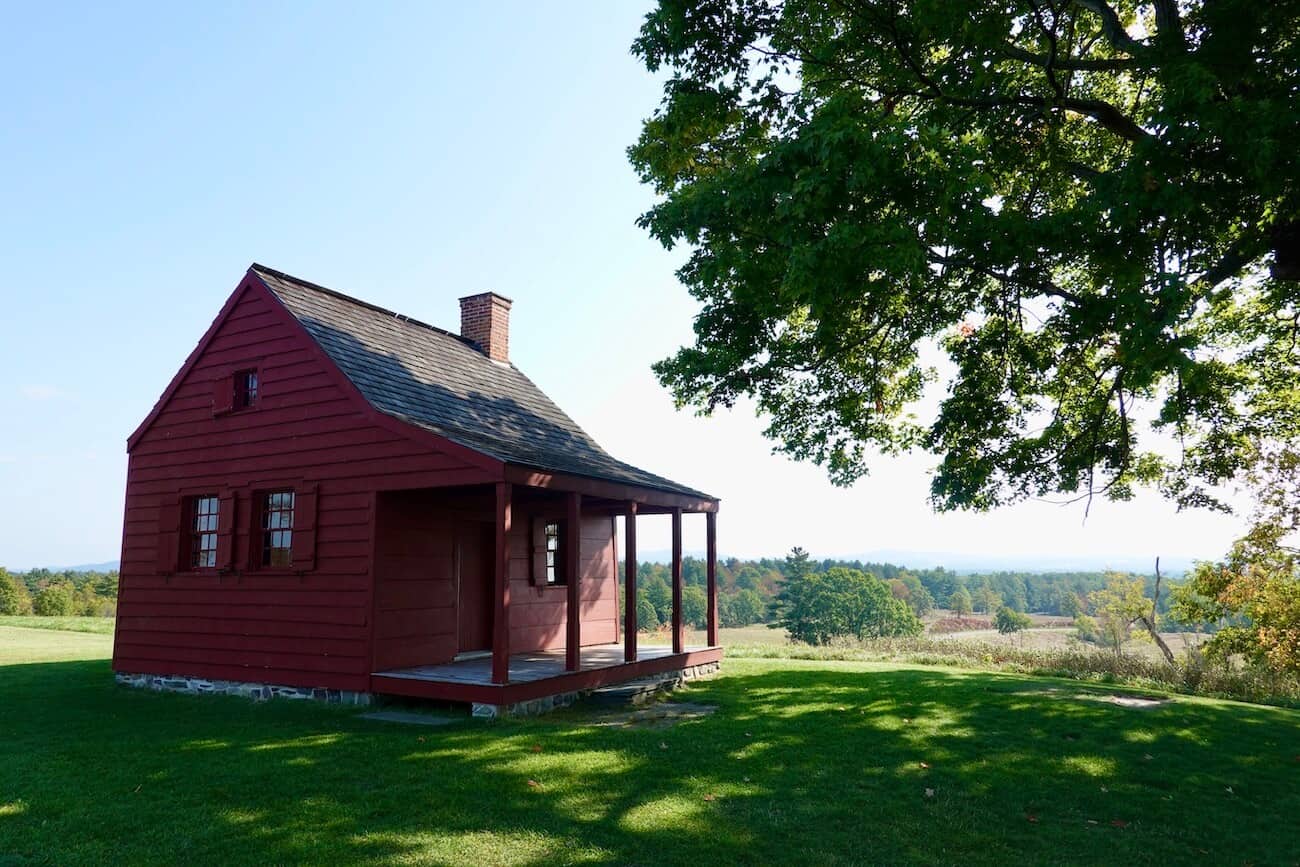
Interesting Auto Tour
Today visitors can take a driving tour through the battlefield and listen (via a smartphone) to commentary at each of the 10 stops. By the way, Benedict Arnold played a key role in the American’s success on October 7, and a small monument was erected on the battlefield (at Stop #7) where his leg was severely wounded; interestingly, the monument does not name him due to his treason years later.
Listening to the audio and driving from site to site, you can surely appreciate the valor of those who served in a quest for independence from the British crown and appreciate the decisive victory this site proved to be for the Americans, fighting for their independence. Route 32, Stillwater, NY
#7 Saratoga Battle Surrender Site
This relatively new site commemorates the surrender of the British military, under the command of General John Burgoyne, to the American forces, under the command of General Horatio Gates.
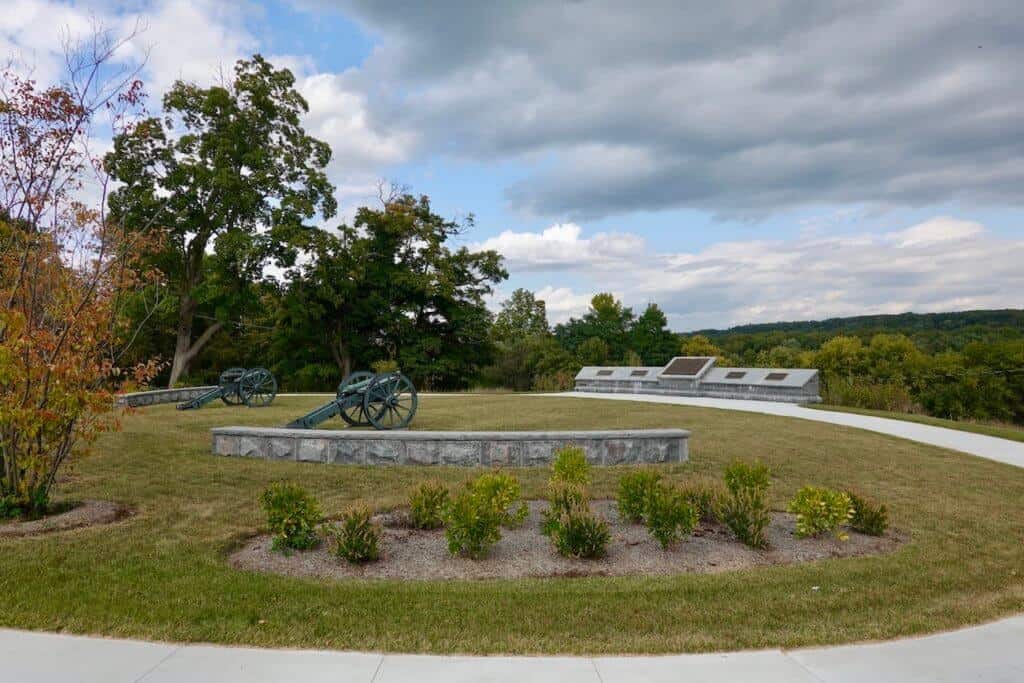
What struck me as so interesting is that the Surrender Site memorial captures views of the different stakeholders in the conflict with plaques quoting American General Gates, a private from Massachusetts, a wife of a German commander under General Burgoyne, and a British Lieutenant. We often hear about the big guys, but this memorial gives voice to others involved in the conflict, as well. Off Route 32, less than 8 miles north of the Saratoga National Historical Park, NY
#8 Schuyler House
This house was owned by American General Philip Schuyler, a wealthy landowner and a key player in the Revolutionary War at Saratoga.
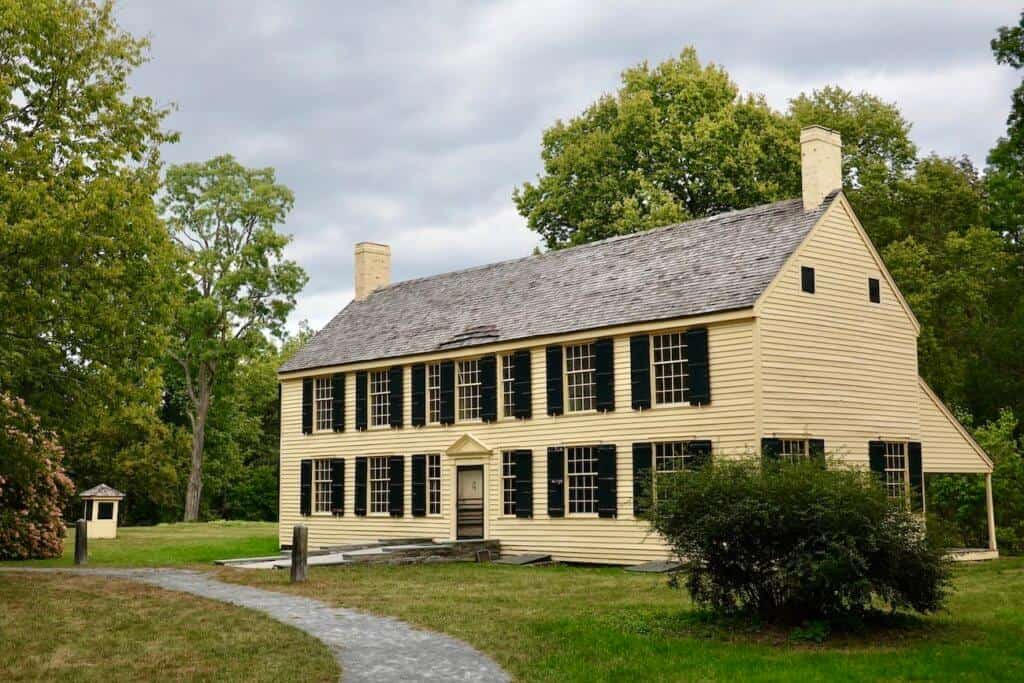
British General Burgoyne burned Schuyler House down during his retreat following his defeat at Saratoga — a strategy to deny the Patriots a safe harbor during an attack. That devastation didn’t deter Schuyler; he rebuilt the home shortly thereafter. Off Route 32 in Schuylerville, about 11 miles north of Saratoga National Historical Park, NY. Check online for current visitation hours.
#9 Saratoga Monument
Standing 155 feet tall, this obelisk commemorates British General Burgoyne’s surrender after the battles of Saratoga. The Saratoga Monument sits on the ground where Burgoyne’s troops encamped near the end of the military campaign.
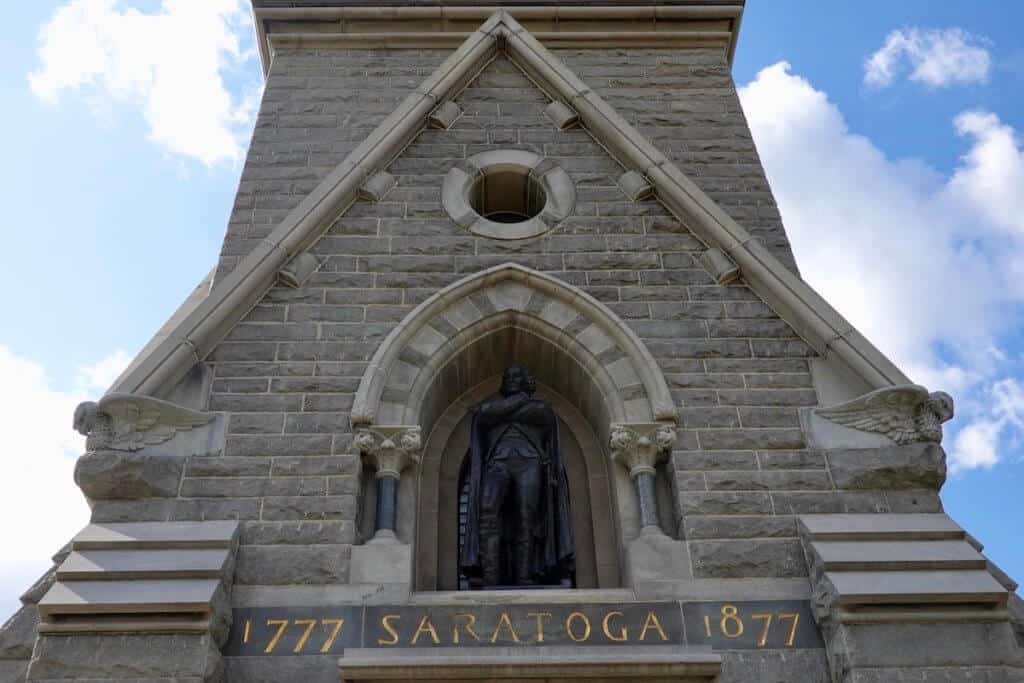
On each of the four sides are niches to commemorate American commanders. Only three of those niches have statues, and they are for General Horatio Gates, Colonel Daniel Morgan, and General Philip Schyler. The fourth niche — the one commemorating General Benedict Arnold — sits empty (on purpose as Arnold later became a traitor to the Patriot cause a few years later). Off Route 32, 8 miles north of the Saratoga National Historical Park, NY.
#10 Victory Woods
Near the Saratoga Monument is a walking trail to Victory Woods, the place where the defeated British (and American Loyalist troops) encamped for a week following their defeat at the Battles of Saratoga in October 1777. Off Route 32, 8 miles north of the Saratoga National Historical Park. NY
Suggestions for All the Saratoga Battlefield Sites
You can easily spend several hours touring the battlefield itself as you’ll be driving to the 10 stops and getting out to look around — and perhaps trying to see the battles through the eyes of the opposing military forces. If you like to picnic, you can’t go wrong by bringing your meal here. There are several picnic options in the park, but the best views are at the Great Redoubt, Stop #9.
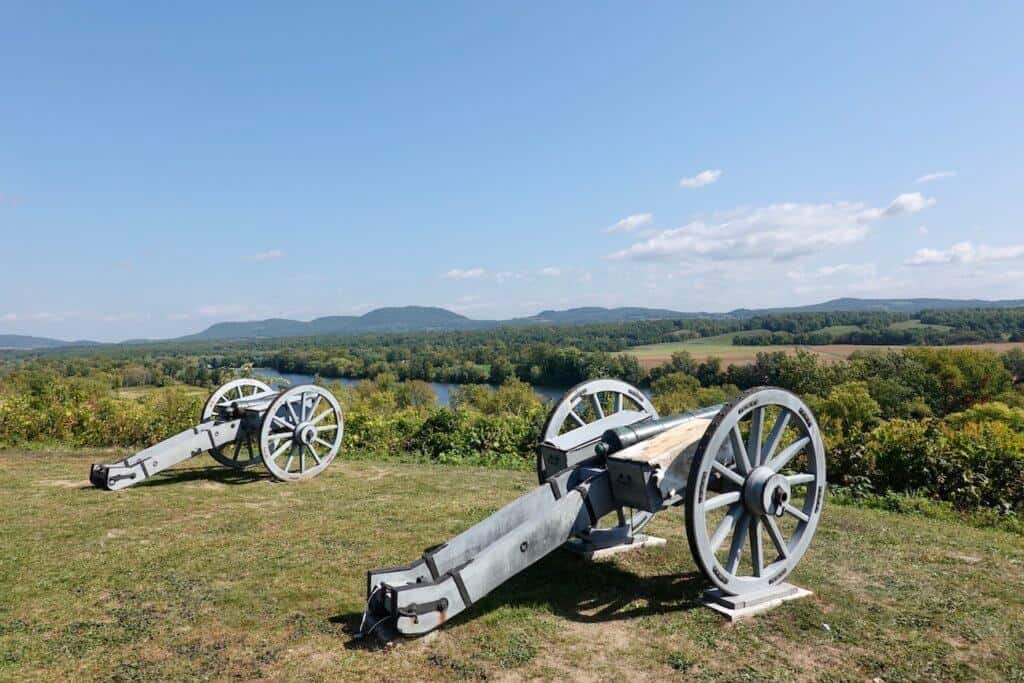
After you visit the battlefield, continue the story of this great conflict with short visits to the Surrender Site, Schuyler House, the Saratoga Monument, and Victory Woods. Fortunately, all of these sites are easily reached by continuing on Route 32 for a few miles.
Map
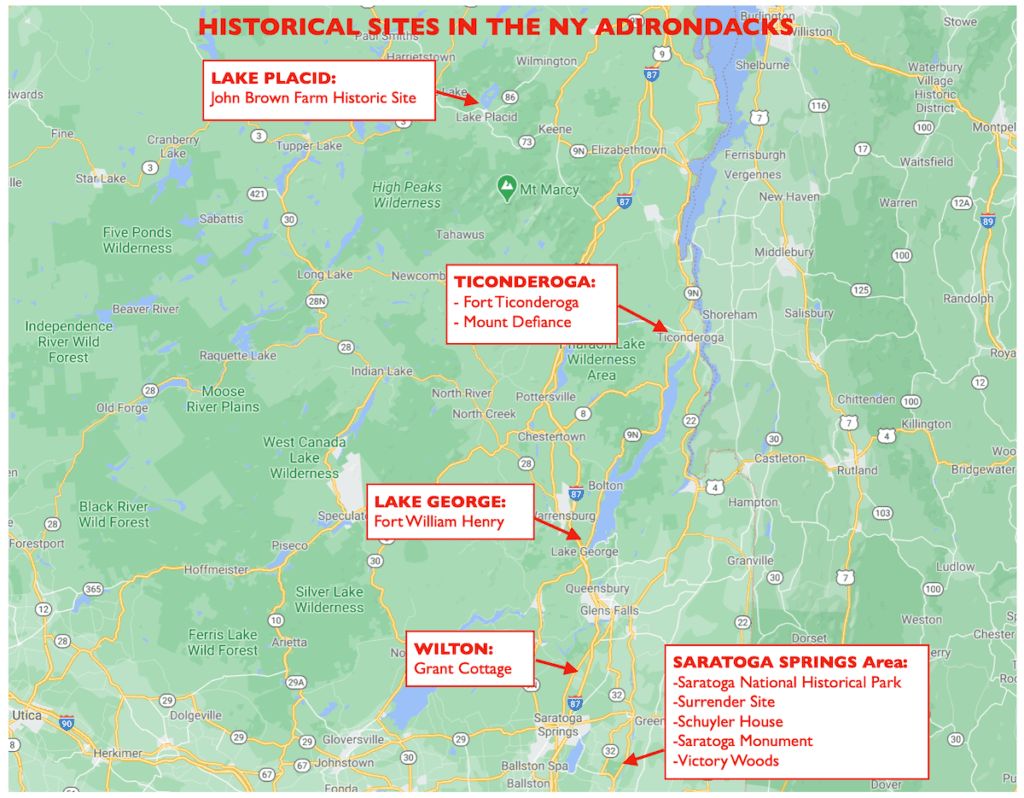
Nearby Attractions
Consider a stay in lovely Saratoga Springs and use it as a home base as you explore the historical sites in the area. Saratoga Springs is a great spot to rest your head — and explore — as it has beautiful parks, mineral springs, spas, and a great downtown with plenty of shopping and dining options. It’s also known for horses and is home to the Saratoga Race Course and the National Museum of Racing and Hall of Fame.
Other articles to help you plan your New York State travels are:
- Hudson River Area: Top Sites to Visit in Dutchess County, NY
- Lake Placid
- Saratoga National Historical Park (Saratoga Battlefield)

Final Thoughts
What happened in our country’s past has had lasting impacts on our lives today. By visiting important historic sites, we gain an appreciation — and sometimes, awe — at what transpired there so many years ago. Each of the sites mentioned here was well worth our time.
Taking picnic lunches along (we kept food in a cooler in our car trunk) when driving to some of the sites provided flexibility as we could take a break for lunch whenever our stomachs started growling. (We didn’t need to waste our time at a restaurant or fast food joint.) Plus the scenery at some of these spots like Fort Ticonderoga (or nearby Mount Defiance) and the Saratoga battlefield are perfect backdrops for a picnic lunch or hearty snack.
Comments
Feel free to share your experiences exploring historical sites in upstate New York or the surrounding area. Your thoughts will be appreciated by other travelers. Thanks! 🙂

